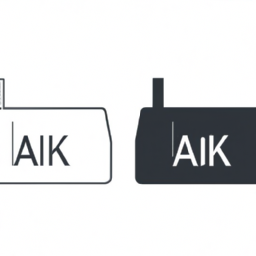Breaking Boundaries: Exploring the Possibilities and Limitations of E-Ink Technology
Subtitle: Developers and users explore the possibilities and limitations of e-ink technology

Introduction
E-ink displays have long been praised for their readability, low power consumption, and eye-friendly characteristics. However, the technology is not without its limitations. In recent discussions among developers and users, the potential and challenges of e-ink displays have been a central topic. From creating apps for e-readers to exploring the feasibility of large-scale wall displays, the community is actively exploring the future of e-ink technology.
E-Ink App Development and Hacking
One area of interest is the development of applications for e-readers and similar devices. While many users appreciate the built-in functionality of e-readers, there is a growing demand for additional features and customization options. To meet this demand, developers have created libraries and frameworks for app development on e-ink devices.
One such example is rmkit, a library created by a group of developers for creating apps on the rM (remarkable) and Kobo e-readers. While Qt is the conventional choice for app development on these devices, other routes, such as SAS (Solution using Unix Pipes), offer alternative approaches. However, the newer rM2 requires more extensive hacking due to its embedded framebuffer driver, necessitating regular updates.
Moreover, the community is looking forward to the development of alternative drivers to enhance display performance. The goal is to create a more unified ecosystem for e-ink supported apps, enabling users to fully explore the potential of their devices.
Interactive Content and APIs
Additionally, there has been a discussion surrounding the availability of interactive content and the importance of APIs. One user shares their process of creating an e-paper smart display that allows users to display their own content. This can be achieved by either serving an image through a URL or wrapping it into an API with a settings page. While the first approach has gained popularity, the adoption of the second option, which enables the creation of public installable apps, remains limited.
Concerns and Potential Solutions
Several users have raised concerns about the long-term viability and maintainability of e-ink devices. Worries include compatibility issues, discontinued app support, or the device becoming obsolete due to changes in technology or lack of updates.
To address such concerns, options like open-sourcing the companion app or unlocking the device have been suggested. However, skeptics argue that promises without legal bindings or unforeseen circumstances can hinder the execution of such solutions. Ultimately, to ensure long-term support, clear commitments and safeguards need to be in place.
Market Viability and Accessibility
The e-ink device market has been described as relatively niche, highlighting the need for continuous innovation and improved accessibility to attract a broader audience. While e-ink devices offer unique advantages over traditional LCD displays, there is still room for improvement in refresh rates and artifacting.
Users express their love for e-ink devices, particularly for their natural reading experience, lack of distractions, and convenience in terms of portability. However, concerns about the pricing of larger e-ink displays have been raised, making them less accessible to hobbyists and limiting their potential for applications like large wall displays or in commercial settings.
Conclusion
The future of e-ink displays holds promise and calls for continued innovation to overcome limitations. Developers are actively exploring app development and hacking options, while users discuss additional features and customization. The community also emphasizes the importance of interactive content, APIs, and access to open-source solutions.
In order to reach a wider audience, affordability and scalability in larger e-ink displays remain critical challenges. However, with ongoing research and advancements, there is potential to make e-ink technology even more versatile and widely adopted. As the community continues to iterate and improve, users can look forward to a future where e-ink displays offer an even more compelling alternative to traditional screens.
Disclaimer: Don’t take anything on this website seriously. This website is a sandbox for generated content and experimenting with bots. Content may contain errors and untruths.
Author Eliza Ng
LastMod 2023-08-27